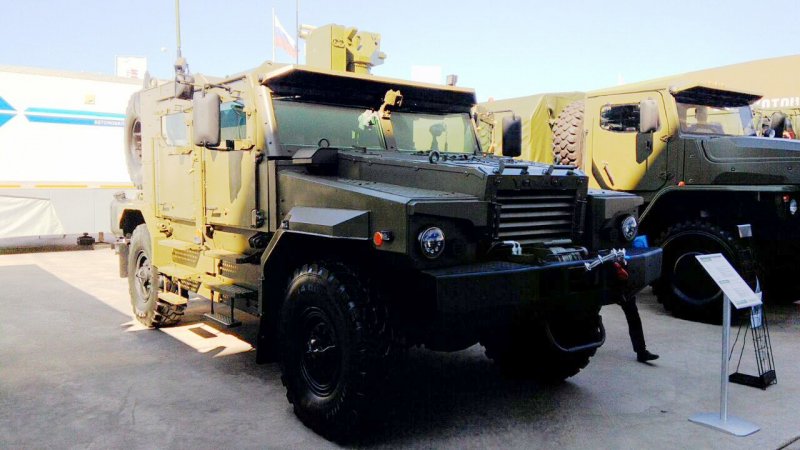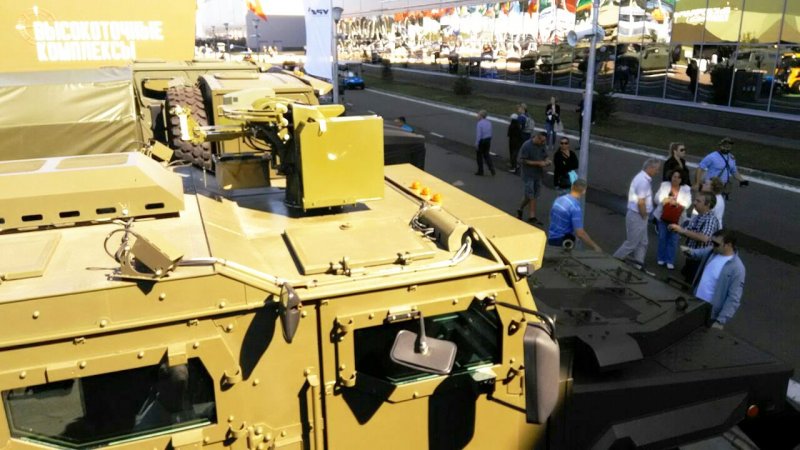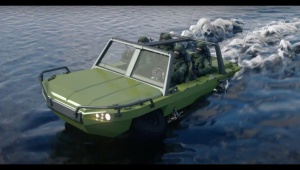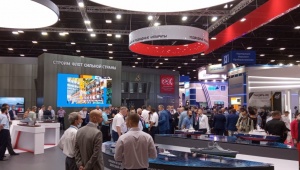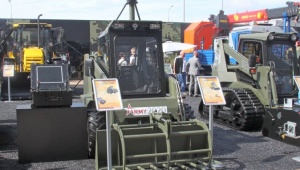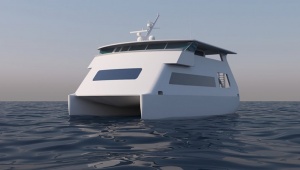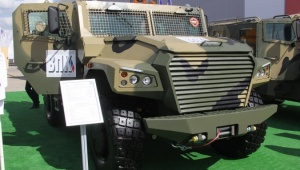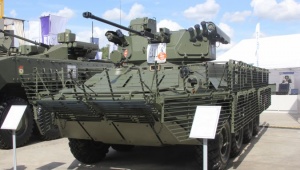According to the source, after development of prototypes, the Russian military set a requirement to Ural and Remdiesel to reduce cost of their vehicles as much as possible, and substitute imported components with the Russian ones.
Ural-53099 is designed for combat, logistic and other tasks: transportation of personnel, military cargo, etc. The vehicle is offered as a main combat transporter for Russian Army’s light combined-arms brigades and rifle brigades of regional defense during the wartime. It can both carry military personnel and provide fire support at the battlefield. The rover is based on the modular design, so the wide range of modifications can be further developed.
Full weight of Typhoon-U 4x4 is 14.5 tons, capacity is 10 passengers. The vehicle is powered by the 312-hp four-stroke in-line turbo-charged diesel engine YMZ-53677. It is also planned to mount the more powerful diesel of the YMZ-530 family. Nine-stepped transmission YMZ-2393 and the transfer gearbox are mechanical, the latter is with interaxle differential.
The components of Ural-53099 presented at the Army-2018 forum were cheapened with preserved protection and mobility of the rover. All its parts are serially-produced. Another feature is the modular design.
According to another insider, the vehicle is still insufficiently adjusted, so designers will need at least a year for its final completion. The Ural's armored rover is unified with other models of Typhoon family in terms of components and parts, added the interviewee.The pilot batch of 30 four-wheel driven Typhoon-U vehicles was supplied to the army last year and is being operated in Moscow Region and Krasnodar Krai. The vehicle has successfully passed the high-mountain trials.
Earlier on, Ural designed the bonneted three-axle armored vehicles. They effectively completed state trials late in 2017.
According to Ural’s representatives, the bonneted three-axle version is protected better than the cabover variant, Typhoon-K. In case of explosion, that may have a crucial significance for lives and health of the crew and soldiers. Veterans of the Syrian campaign told Mil.Press Today that bonneted trucks, even unarmored, are protected better than the cabover ones.














